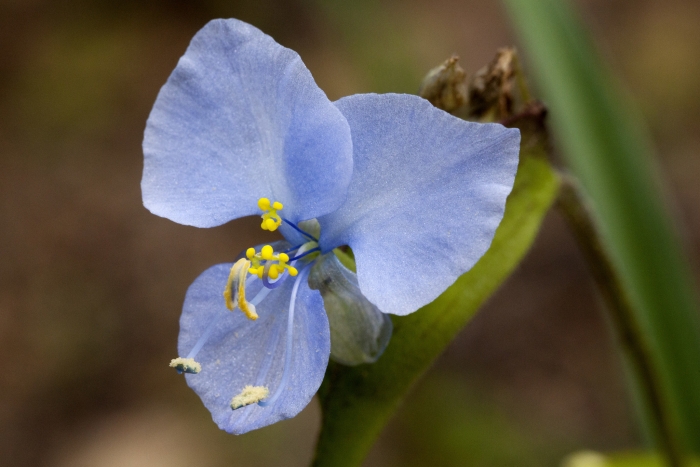Birdbill Dayflower
(Commelina dianthifolia)
Birdbill Dayflower (Commelina dianthifolia)
/
/

Cecelia Alexander
Public Domain
Image By:
Cecelia Alexander
Recorded By:
Copyright:
Public Domain
Copyright Notice:
Photo by: Cecelia Alexander | License Type: Public Domain | License URL: http://creativecommons.org/publicdomain/zero/1.0/ | Rights Holder: Cecelia Alexander | Publisher: iNaturalist | Date Created: 2017-08-13T10:53:18-07:00 |

















































Estimated Native Range
Summary
Commelina dianthifolia, commonly known as Birdbill Dayflower, is a deciduous perennial herb native to rocky slopes, open woodlands, and pine-oak forests in the Southwestern USA, Mexico, and Central America. It typically grows to a height and width of approximately 1 foot (0.3 meters). The plant features a clumping growth habit with lance-shaped leaves and produces distinctive tri-petaled flowers that are most commonly a vibrant blue, although color can vary, with two larger petals and a smaller one, resembling a bird’s beak, hence the common name. The flowering season extends through the summer months, and the flowers are known for their ephemeral nature, typically lasting for only one day.
The Birdbill Dayflower is valued for its unique flowers and its ability to thrive in challenging conditions, making it suitable for rock gardens, xeriscaping, and as a ground cover in warm climates. It is also appreciated for its low maintenance requirements. In cultivation, it prefers full sun to partial shade and requires well-drained soil. While it tolerates low water conditions, moderate watering will encourage more vigorous growth and flowering. It is not commonly afflicted by serious diseases or pests, but it can be sensitive to overwatering, which may lead to root rot.CC BY-SA 4.0
The Birdbill Dayflower is valued for its unique flowers and its ability to thrive in challenging conditions, making it suitable for rock gardens, xeriscaping, and as a ground cover in warm climates. It is also appreciated for its low maintenance requirements. In cultivation, it prefers full sun to partial shade and requires well-drained soil. While it tolerates low water conditions, moderate watering will encourage more vigorous growth and flowering. It is not commonly afflicted by serious diseases or pests, but it can be sensitive to overwatering, which may lead to root rot.CC BY-SA 4.0
Plant Description
- Plant Type: Herb
- Height: 0.8-1.5 feet
- Width: 0.533-1 feet
- Growth Rate: Moderate
- Flower Color: Blue
- Flowering Season: Spring
- Leaf Retention: Deciduous
Growth Requirements
- Sun: Full Sun
- Water: Low, Medium
- Drainage: Slow, Medium
Common Uses
Bee Garden, Bird Garden, Butterfly Garden, Deer Resistant, Edible*Disclaimer: Easyscape's listed plant edibility is for informational use. Always verify the safety and proper identification of any plant before consumption., Groundcover, Low Maintenance, Rock Garden, Showy Flowers
Natural Habitat
Rocky slopes, open woodlands, and pine-oak forests
Other Names
Common Names:
Scientific Names: , Commelina dianthifolia, Commelina tuberosa var. dianthifolia,
GBIF Accepted Name: Commelina dianthifolia Redouté